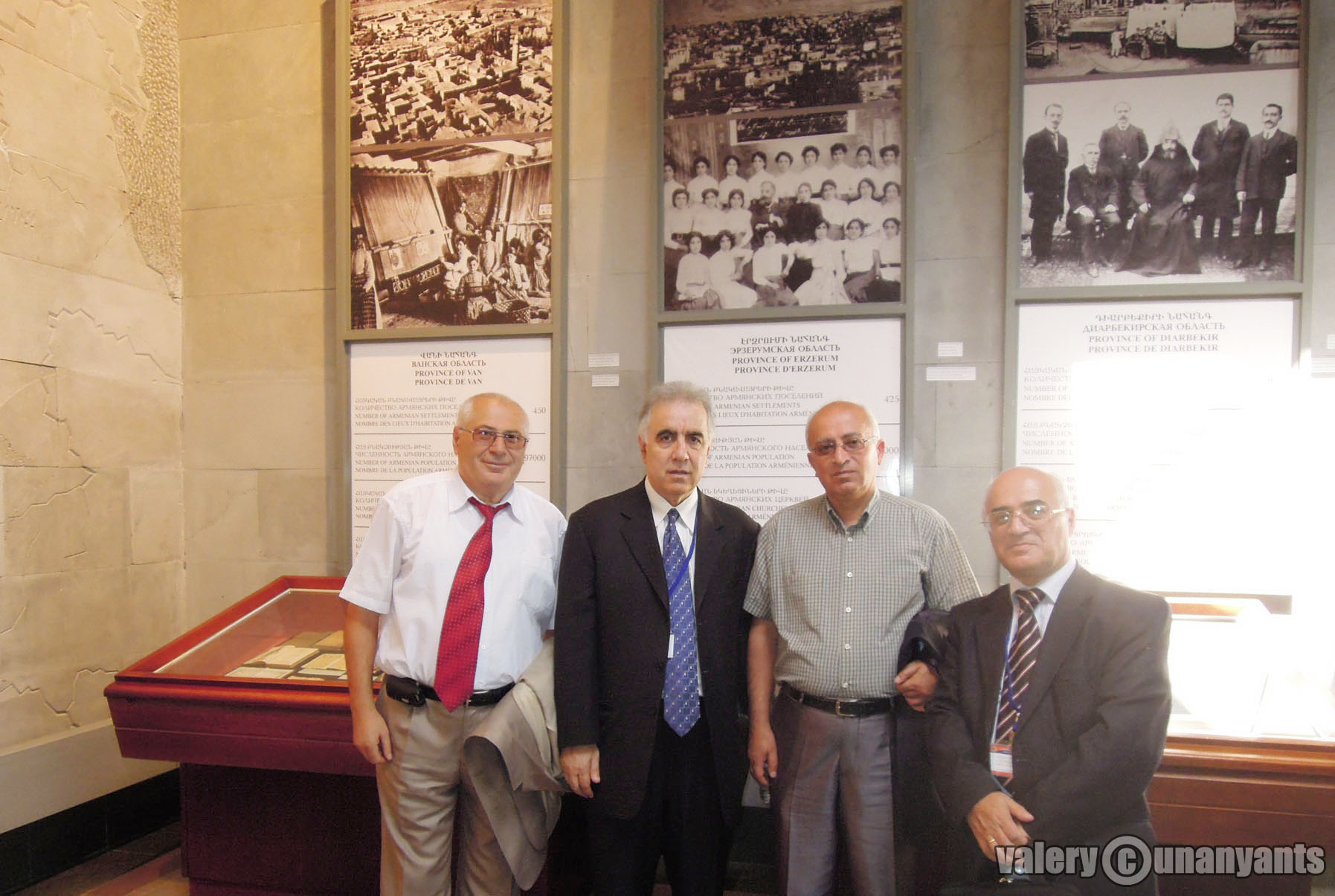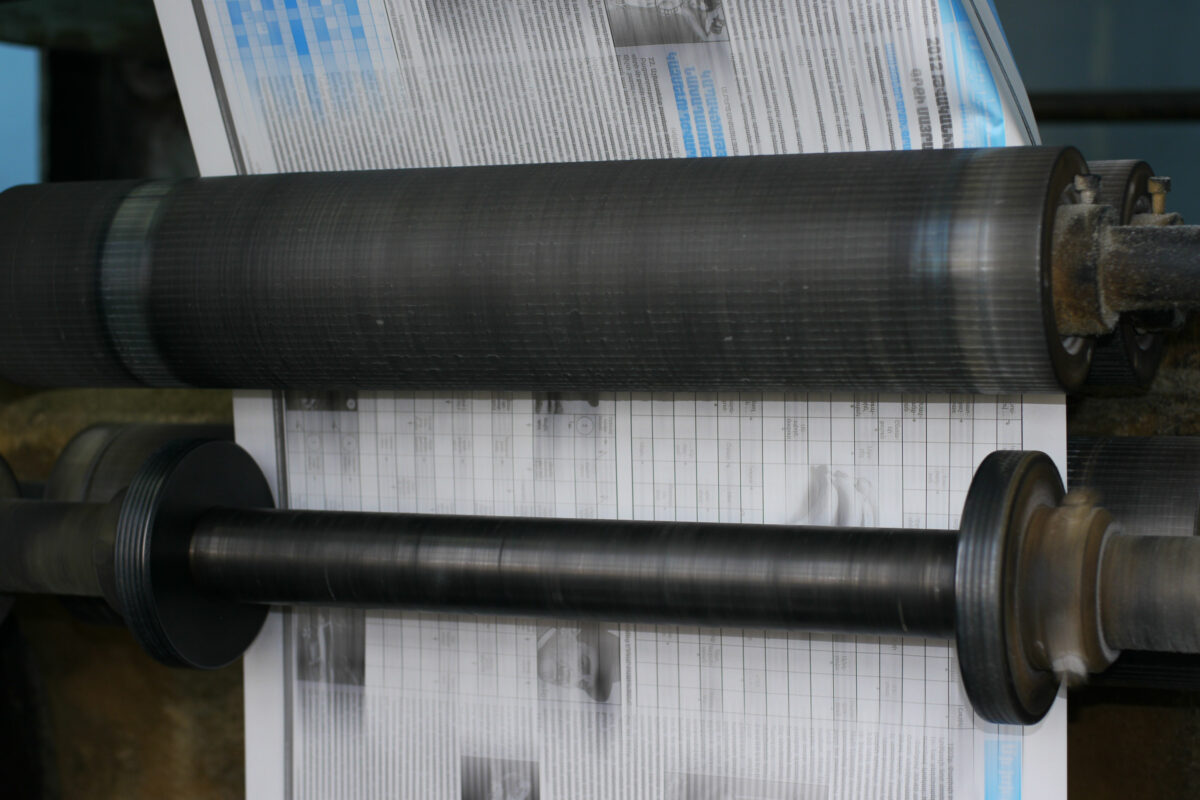Media.am continues its interviews with chief editors of local newspapers on the problems and survival prospects of the print media in Armenia.
At the end of the series, the overall trends will be summarized.
Our interviewee in this segment is chief editor and director Pap Hayrapetyan of the regional newspaper Sevan.
“People of Sevan want to see themselves in the paper, and that’s a benefit for us”
Sevan newspaper
Founded in 1939.
Published twice a month.
Circulation: 1,000
Printing: black and white, 8 pages.
Price: 200 AMD (about $0.42 USD)
Revenue sources: subscription; government subsidies (500,000 AMD [about $1,040 USD] annually); current grant from the community of Sevan (for services rendered); newsstand sales (very little); advertising (very little); assistance and donations, mainly from the heads of communities and businessmen
Is there competition with national newspapers?
No, because our problem is different; theirs, different. We try to stay away a little from sensations, unlike newspapers from the capital. We talk about the everyday concerns of the area’s residents, present their problems.
The residents of the community of Sevan and of the nine villages in the region, for whom the newspaper is printed, which do they read more: the capital city or the local [paper]?
Of course the local [paper] because we cover the specific issues that are of concern to them. In this sense, we’re in an advantageous position. The national papers reach all our surrounding villages or not, I don’t know for sure, but we get ours to everyone, and we even send more — to distribute free-of-charge, because there are many who want to read [it] but don’t have the means to subscribe.
Do you send more [copies] by incurring a financial loss?
We benefit on one hand, acquire losses on another…
From whom do you benefit?
Say, from businesspeople; often, from international organizations. In 1998, we received computer equipment from Open Society Foundations, with which we also helped the regional newspaper and Ap magazine. We received grants as well from the Eurasia [Partnership] Foundation, the US Embassy, the ProMedia media support program, the US organization IREX.
Who of the businesspeople?
For example, we have a bread factory, whose owner, Ashot Avetisyan, helps us a lot.
Without expecting anything?
Without any expectations. He even doesn’t agree to the paper printing any information about his factory; he helps unselfishly. Let me add that there are many people like him.
By the way, in 2015, for the first time we closed the year with a profit. Until then, we always operated at a loss. Of course, the profit wasn’t great, but a regional paper working at a profit is a big deal and speaks to progress and stability.

I’m looking at the issues of the paper you brought, and there’s no advertising. Is that accidental or do you generally not carry advertising?
Do we [even] get advertising to carry it? Very rarely do we get advertising. Nor do we have a great expectation, because in the region, the economy, especially industry, is asleep — it can be said, it doesn’t exist at all.
You know, what interferes a lot is that our paper’s frequency is so low. During the Soviet years, the paper was printed three times a week. Today, [it’s] twice a month, because of very limited financial opportunities — sometimes [just] once. That’s too little. We’re not able to get the information quickly to readers. That’s a problem for us, and we’re working on it.
Is regional television your paper’s competitor?
Yes, the regional TV company Geghama is our competitor, and that’s natural, since using its opportunities, it’s able to quickly convey current information to TV viewers. Soon we’ll launch our website — we’ll solve the timeliness problem with that, I think. And, by the way, that advertising left the newspaper, that was also television’s “fault”.
In other respects, television is not our competitor. If you go into any institution or business in Sevan now, any village community, you’ll see on their tables the Sevan newspaper. Because print media is something else: television displays, it comes and goes, while that [the paper] remains on the table, people read it, pass it on. The newspaper also gets passed from family to family. In this sense, it can be said that the number of the paper’s readers reaches the thousands.
Where is your newspaper printed?
At Yerevan’s Samark printing house, like many other regional newspapers. This for us is a very expensive and time-consuming problem: we do the newspaper’s entire work in Sevan; we send the prepared sheets by car to Yerevan, then bring the entire print run [back] to Sevan.
There isn’t a printing house in the entire province. In the past, all those cities had printing houses. During the Soviet years, there was a printing house in Sevan, it was privatized, and nothing has remained of it. Only the building remains, but there’s no equipment
Are there no prospects for a new local printing house?
It wouldn’t be justified. What is it going to print, for it to make at least a little profit?
Apart from the financial, what other issues does a regional newspaper have?
[The issue] of journalists. Our journalists also work in other places. Young journalists don’t come to the paper.
But where do Sevan residents who graduated from the faculty of journalism go? Aren’t there graduates?
There are, there are many: 2–3 people come to our paper annually, for internships. But after graduating, they move to Yerevan for work. Because salaries are low here, we’re unable to entice them.
We pay reporters 50–60 thousand dram [about $104–$125 USD (monthly)], which is very little. They pay more in Yerevan. Some Yerevan journalists are able to ensure “earnings” for themselves apart from their salaries, which is not possible at regional newspapers.

Do you mean by writing commissioned pieces?
Why not? The national newspapers’ journalists, coming to the province, will neither write a story nor take that story and print it without payment.
Are there critical pieces in Sevan newspaper?
I’ve been working at this paper since 1984, and I’ve been its editor since 1997. I layout the paper’s pages; I do the pagination, take the photos, edit… And I have a constant, unbreakable principle: every issue of the paper must contain 60–70% critical pieces for the reader to read.
I consider successful an issue of the paper when after printing, a few people call and are offended, [saying,] what is this you wrote. A newspaper must have teeth, and if it doesn’t, I don’t appreciate it.
Do you also criticize the heads of communities? How do they respond?
Yes. And they respond quite normally. We must be able to teach them to accept critical pieces and accept the positive.
How many years did it require to teach them?
We’re still teaching them.
There have been many problems, particularly in the field of education, with school principles, with the regional administration.
There have been times when we haven’t been able to understand each other — they even threatened to go to court. But we were able to convince [them], to make [them] understand that the good is for them and the bad is for them too, that they have to learn to accept criticism, of course when it’s healthy criticism.
Who are your readers?
Primarily people of an older age. Unfortunately, very few young people read our paper, but we’ve set ourselves a task: to bring the youth to our arena, be able to make them our readers.
Years ago, with a US Embassy grant, we studied our reading audience, and understood what expectations youth have of the paper. And in our published pieces we try to choose those topics that will attract the youth.
Basically, your paper has 77 years of traditions.
Yes, that’s why I say that our paper is the chronicler, the biographer of the region. All our issues published since 1939 are kept in the editorial office’s archives. The paper has been published under different names: A Stalin Speech, With Lenin’s Flag… also during the Soviet years it was called Sevan, and when we reregistered in 2001, we decided that we must keep the name Sevan because it’s become dear to the residents of the area.
As for the the 77 years of issues, there are so many more writers now: each one publishes a book a day, and they come and user our paper’s archives.
Why don’t you make the archives a paid service?
We live in a small city. You go out and everyone is an acquaintance, relative, friend. I am to ask for money from them?
They help us another way, subscribe to the newspaper, advise their acquaintances [to subscribe]. When we bring the issue from the printing house, people come and ask. We probably distribute about 50–60 copies like that [for free]. I give the newspaper often to people in need. They are the paper’s loyal customers, who don’t have money today. A print run of 1,000 copies doesn’t bring me any money: we distribute about 200 of it for free.
Isn’t 1,000 too little for the area’s 25–26 thousand residents?
If you study the circulations of other local, regional papers, and also, why not, the national papers, you’ll be convinced that 1,000 is not too little and maintaining that many has become a sort of heroism for us. We’re working to be able to add even one more thing.
During those difficult years, the circulation decreased substantially, and the paper was even faced with the threat of not being printed. But it must be said that Sevan, unlike many, many former regional and city papers, which closed and disappeared, has never stopped printing and in the provinces of Gegharkunik, Tavush, and Kotayk, it’s the only regional newspaper today.
We mainly work on subscriptions. All the institutions and businesses in the area, respecting both me and the paper, subscribe, they help.
The community administration offices subscribe, the municipality, schools, nurseries and kindergartens… we have individual subscribers too, but local self-government bodies subscribe more so than residents. We’re trying to attract more individual people.
Have you ever thought about how long Sevan newspaper will last?
How long it will last is a big problem today for all newspapers, but for us, I think it’s not a problem: the people of Sevan want to have their paper. Opening our paper, they see themselves and want to constantly see themselves in its pages. And that’s also a benefit for us.
Interview by Ruzanna Khachatrian






